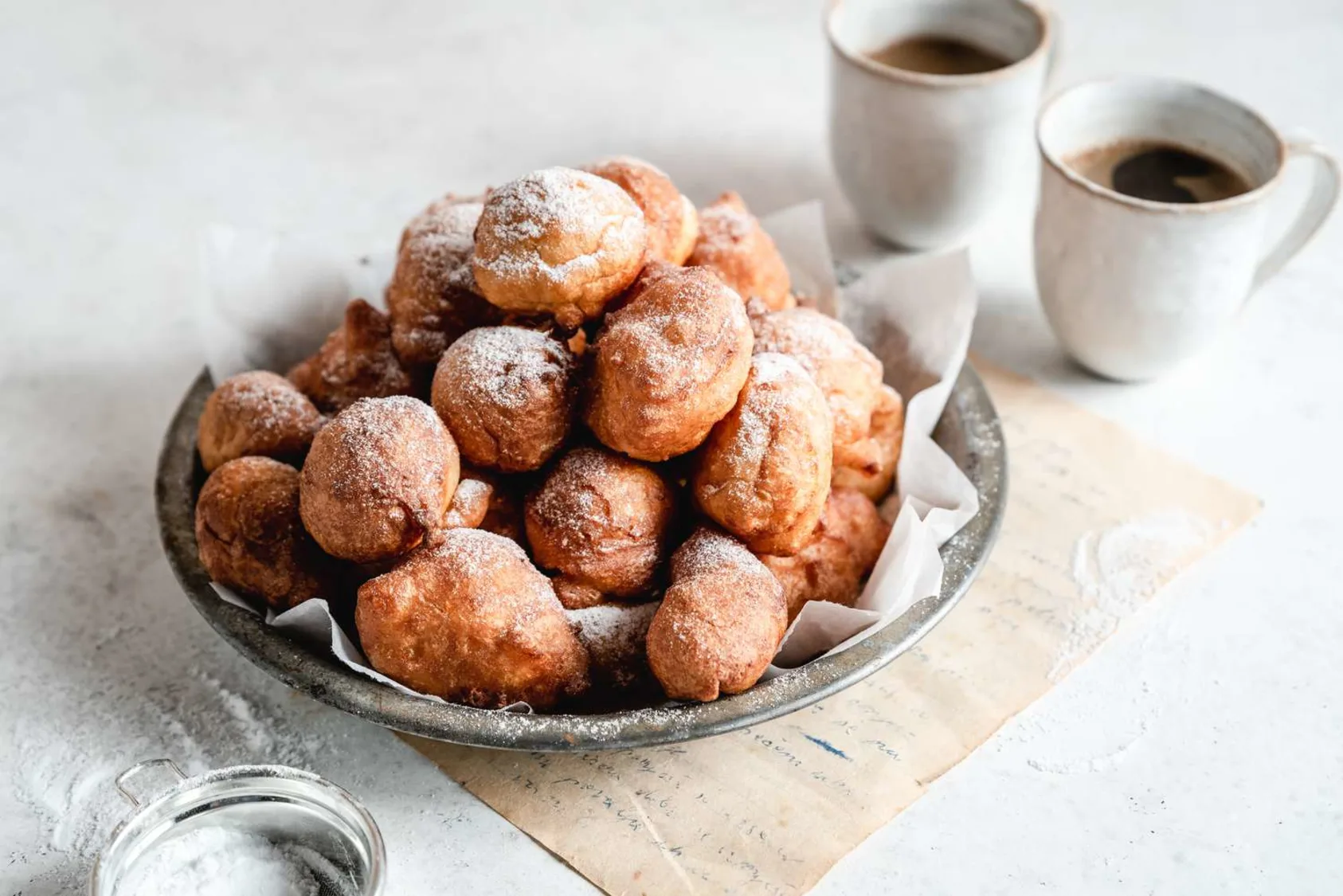
Oliebollen
Dutch doughnuts traditionally eaten on New Year's Eve.
Ingredients
- •Flour
- •Yeast
- •Milk
- •Eggs
- •Raisins
- •Oil
- •Powdered sugar
Instructions
Make Dough
Mix ingredients and let rise
Fry
Drop spoonfuls of dough into hot oil
Finish
Dust with powdered sugar
Oliebollen, which literally translates to "oil balls," are traditional Dutch doughnuts that have become synonymous with New Year's Eve celebrations in the Netherlands. These delightful deep-fried treats are crispy on the outside while remaining soft and fluffy on the inside, dusted generously with powdered sugar that adds a sweet finishing touch.
The history of Oliebollen dates back to the Germanic tribes during the Yule period, where eating these fried dough balls was believed to ward off the evil goddess Perchta. Over centuries, they evolved from a pagan tradition into a beloved Dutch holiday treat, particularly associated with winter festivities and fairgrounds. During the Dutch Golden Age, these doughnuts even made their way into several famous still-life paintings.
Making Oliebollen is a cherished tradition that fills Dutch homes with an irresistible aroma. The dough is made from a mixture of flour, yeast, milk, and eggs, often studded with raisins or currants for extra flavor and texture. After allowing the dough to rise, it's carefully dropped by spoonfuls into hot oil, where it transforms into golden-brown spheres. The process requires skill to achieve the perfect round shape and ensure they're cooked through without becoming too dark.
While the classic version with raisins remains popular, modern variations include apple pieces, candied citrus peel, or chocolate chips. Some bakers experiment with different types of flour or add warming spices like cinnamon. There's even a savory version made with cheese and bacon, though this is less common than the traditional sweet variety.
In the Netherlands, you'll find Oliebollen stands (called "oliebollenkramen") popping up on street corners and in markets throughout December. They're traditionally eaten hot, fresh from the fryer, generously dusted with powdered sugar. While they're most strongly associated with New Year's Eve, many Dutch people enjoy them throughout the winter season, often accompanied by a cup of coffee or hot chocolate.
From a nutritional standpoint, Oliebollen are definitely a treat to be enjoyed in moderation. Each ball contains approximately 200-250 calories, largely from the frying process. They're best consumed fresh, as the texture can become heavy when they cool down. For those with dietary restrictions, it's worth noting that traditional Oliebollen contain gluten and dairy. However, many modern bakeries now offer gluten-free or vegan versions to accommodate different dietary needs. Despite their indulgent nature, these festive doughnuts remain an integral part of Dutch cultural heritage and continue to bring joy during the holiday season.
